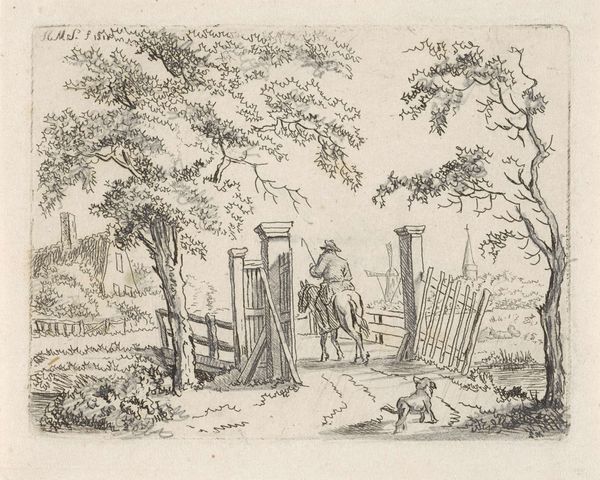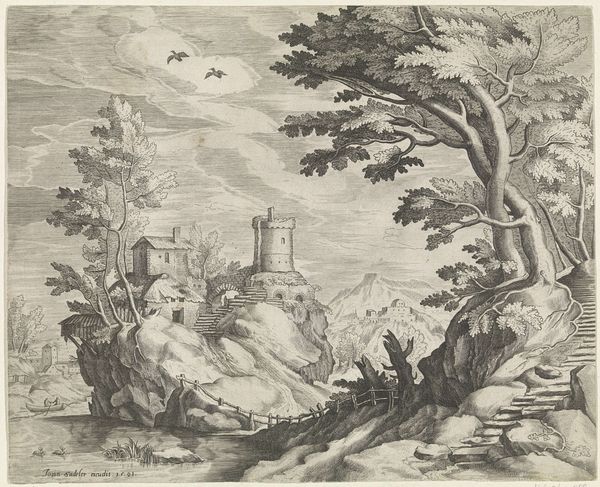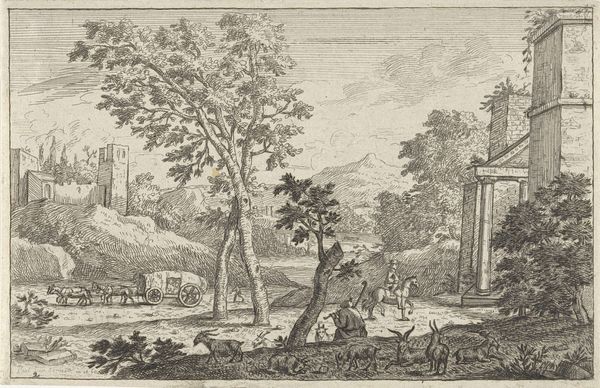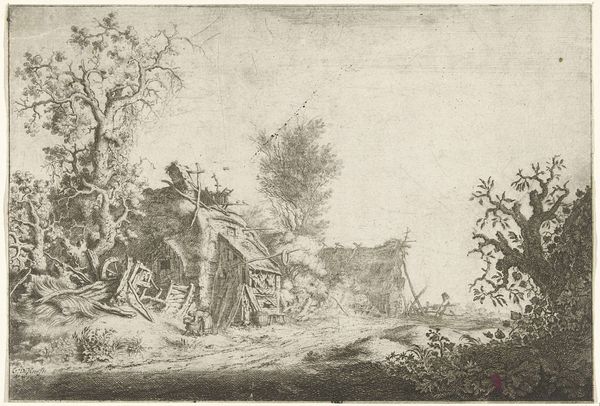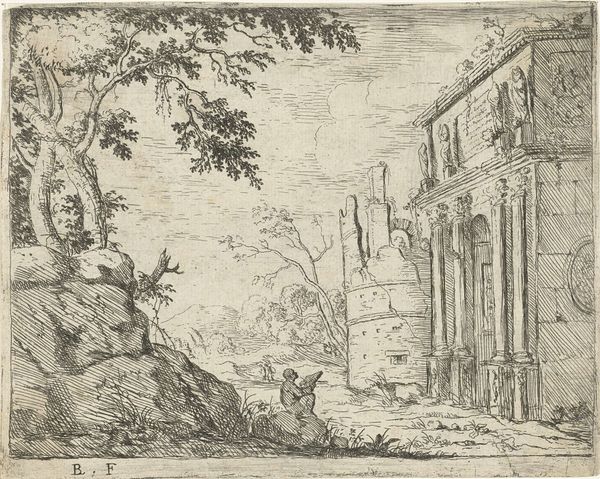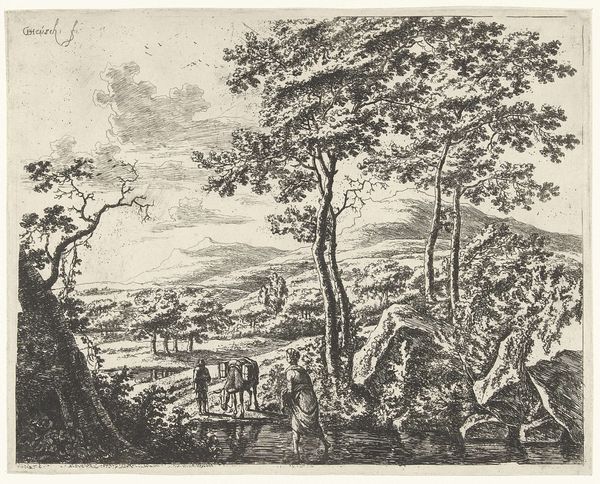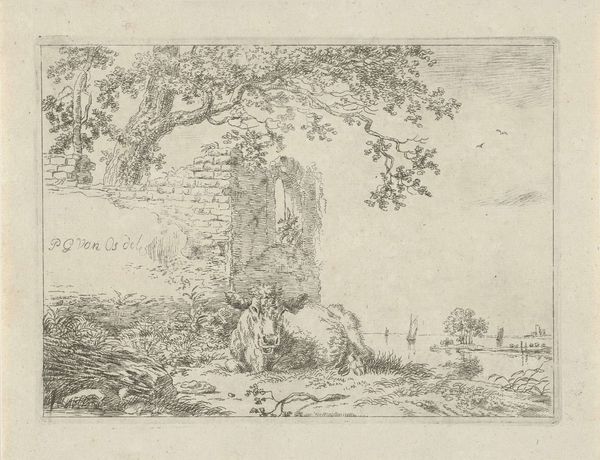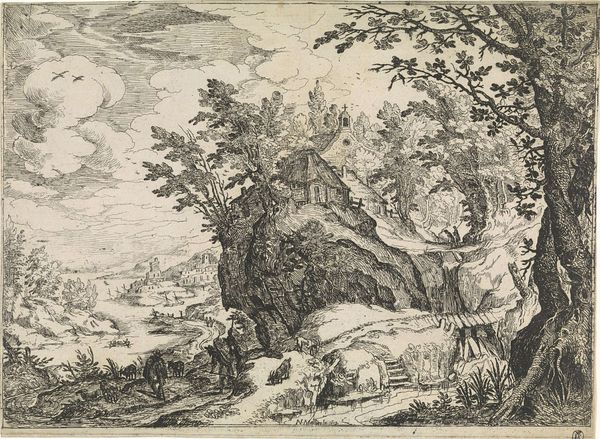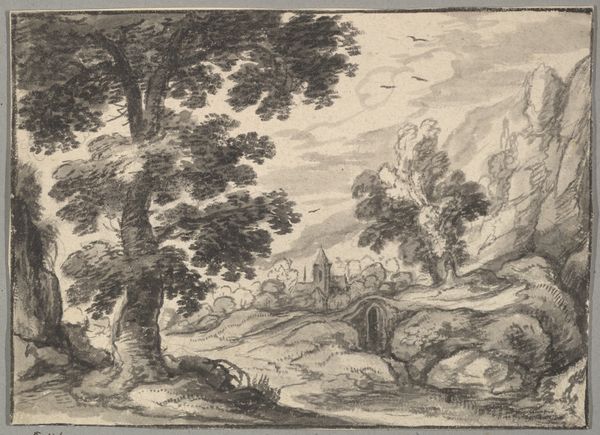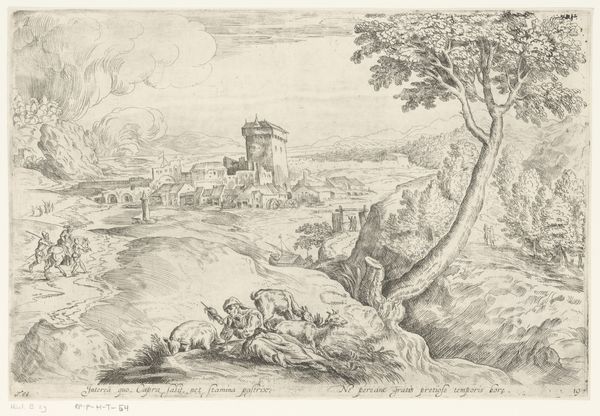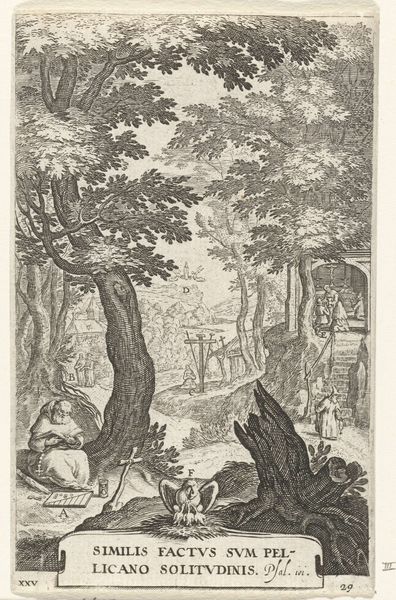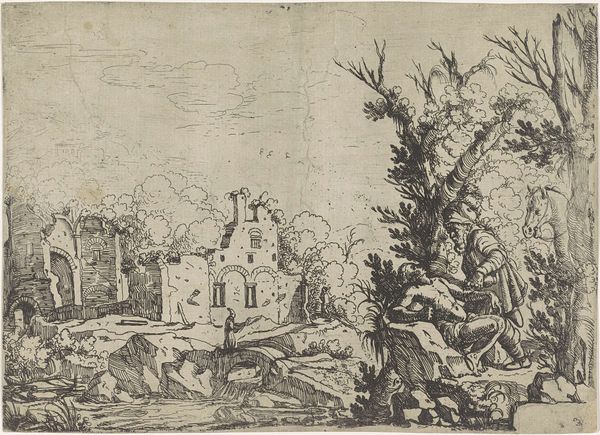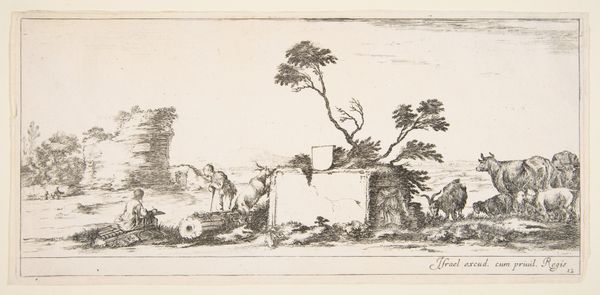
drawing, print, etching
#
drawing
#
baroque
# print
#
pen sketch
#
etching
#
landscape
#
figuration
#
pen-ink sketch
#
pen work
Dimensions: height 120 mm, width 171 mm
Copyright: Rijks Museum: Open Domain
Curator: This etching, “Three Soldiers by a Ruin,” was created by Laurens Barata before 1656. Look closely at the intricacy achieved with etching. What stands out to you? Editor: An immediate impression? It's a study in decay and perseverance, with those soldiers trekking past crumbling grandeur. The ruins almost dwarf them. Curator: Barata utilized etching and drypoint here, a printmaking process where the artist scratches directly into a metal plate, allowing for a more direct, almost improvisational mark-making, reflecting, perhaps, the instability of the subject matter. Editor: Absolutely. Etching in that era, though… we have to remember the economics of art production. How does this work relate to its intended market? Was Barata catering to a military clientele? What statement is made when war becomes a viable artistic theme? Curator: That's a pertinent point. The print medium itself speaks to distribution, the commodification of imagery, particularly related to military endeavors or their aftermath. The composition centers the materiality of the remnants, its labor seemingly vanished or irrelevant. Editor: These are potent ruins. There are remnants of colonialism and violence inscribed in these landscapes, with displaced populations, economic exploitation… soldiers are always implicated, then and now. This artwork inadvertently shows us the mechanics of empire, from production to consequences. Curator: Certainly. Considering Barata’s style—Baroque— it captures a drama in decline through that delicate rendering of the crumbling architecture; the scene's temporality, highlighted by those active figures amidst historical decay. Editor: The way it almost romanticizes this kind of wandering. Those figures, are they aware of their presence in this scene? What relationship do these soldiers have to the land? Curator: An essential question to keep in mind when navigating representations of the past! Editor: For me, seeing that bridge with figures distantly behind is a poignant reminder. A sense of historical responsibility. Curator: Well said. It's about more than technique. Barata uses etching to illustrate history, but also the present conditions of that era, with all the layers that process reveals to us today.
Comments
No comments
Be the first to comment and join the conversation on the ultimate creative platform.
